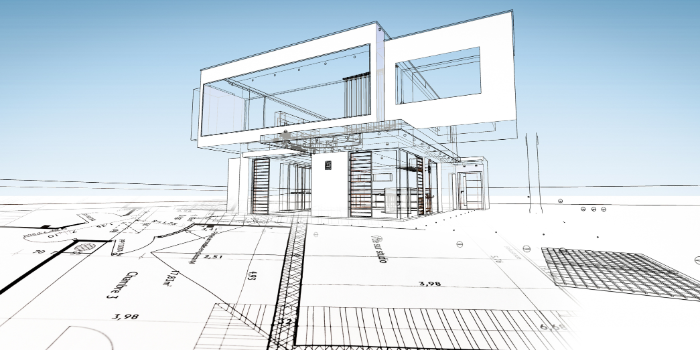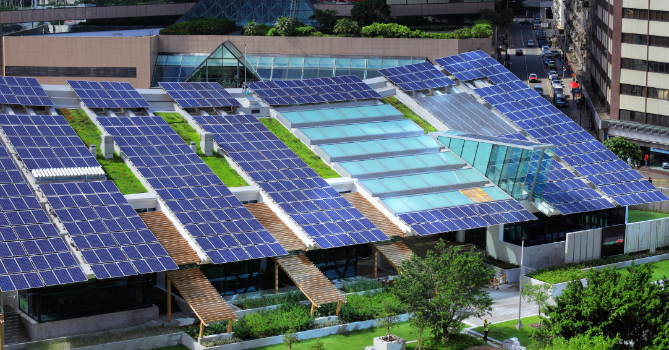
From Sketches to Skyscrapers: The Trials of Modern Architects
Have you ever wondered why building a simple house or designing a skyscraper has become so complicated these days? Well, you're not alone. Today's architects face a dizzying array of challenges that make their work tougher than it might seem on the surface. In this article, we're going to dive into the reasons behind these difficulties. We'll explore how modern technology, while helpful, also adds layers of complexity, how economic pressures squeeze creativity, and how crucial it is for buildings to not only stand up but also fit in with their communities and environments. Our goal is to peel back the curtain on the world of architecture today, showing you the ropes of what makes this profession as demanding as it is fascinating. So, let’s get into the heart of why being an architect isn't as straightforward as drawing lines on a blueprint.
Today's architects have a whole new toolbox thanks to technology. But with great tools come big challenges. Imagine designing not just with a pencil but with powerful software that can simulate entire buildings. Programs like BIM (Building Information Modeling) help architects see their designs come to life before a single brick is laid. They can test everything from sunlight patterns to energy efficiency. This sounds great, right? But it also means architects need to learn these complex tools, which are always updating and evolving.
Then, there's 3D printing. This technology can create models and parts of buildings that were once considered impossible. It pushes architects to think beyond traditional building methods. Yet, it also adds another layer of learning and adaptation.
And we can't forget about AI. Artificial intelligence can crunch big data to predict how a building will perform, help in designing, and even manage project tasks. But relying on AI requires understanding its limits and quirks.
All these technologies make architecture more exciting and dynamic. They let architects experiment and innovate like never before. However, they also demand continuous learning and flexibility. Keeping up with tech changes can feel like running a never-ending race. Every new tool improves possibilities but also raises the bar for what needs to be mastered. It’s a thrilling time to be in the field, but it’s certainly not an easy one.
Gone are the days when an architect's main job was just to draw designs. Today, they need to work hand-in-hand with a whole crew of different experts. From environmental scientists who help make buildings greener, to engineers ensuring everything is safe and sound, an architect's role is more like a team leader in a diverse group.
Take sustainable design, for instance. It's not just about choosing the right materials anymore; it involves complex environmental impact assessments and integrating renewable energy solutions like solar panels. This means architects must also understand and respect the insights from environmental experts to make sure the building is truly eco-friendly.

Then there's the cultural aspect. Architects must engage with local communities and historians to ensure that new buildings respect and complement their surroundings. This might mean altering designs to fit local aesthetics or historical significance, which again, requires understanding and negotiating multiple perspectives.
And let’s not forget the legal side. Navigating building codes and regulations means working closely with legal experts to ensure everything complies with the latest laws, which can differ wildly from one place to another.
Each of these elements pulls the architect in different directions, making their job incredibly complex. They need to balance all these inputs, make decisions that sometimes conflict, and still come up with a design that's safe, beautiful, and functional. It’s a tough juggling act, requiring not just architectural know-how but skills in diplomacy, management, and sometimes a bit of tightrope walking. This interdisciplinary approach isn't just good practice; it's essential in today's interconnected world where buildings are more than just structures—they're part of a larger ecosystem.
In the world of architecture, money talks. Every project starts with a budget, and often, it's tighter than you'd think. Architects are constantly being pushed to do more with less, to cut costs without cutting corners. This financial squeeze can stifle creativity, forcing professionals to opt for cheaper materials or simpler designs that may not fully realize their vision.
For small firms especially, the battle is uphill. Winning bids in a competitive market means quoting lower, which can mean thinner profit margins. And with the rising costs of construction materials and labor, maintaining a balance between quality and affordability is a daily struggle.
Architects also face the challenge of forecasting costs for long-term projects. With economic fluctuations, what starts as a financially viable project can quickly become a money pit. They must plan meticulously, predicting and mitigating financial risks long before construction begins.
Then there's the client's expectations. Everyone wants their building to look good and function well, but not everyone is willing to pay for what that takes. Architects often find themselves negotiating not just designs but also trying to educate clients on the long-term value of investing in quality architecture.

Moreover, public projects add another layer of complexity with their strict budgets and lengthy approval processes. These projects are essential for community development but navigating the bureaucratic labyrinth of public funding and cost constraints requires patience and ingenuity.
All these economic pressures make the job of an architect more about numbers and negotiations than many might expect. It's not just about building beautiful spaces; it's about building feasible projects that balance the artistic with the attainable.
Architecture is much more than just designing spaces; it's about creating environments that resonate with people and reflect community values. Today, architects have to consider not just the physical, but the cultural and social impact of their designs.
For example, integrating a new building into a historic neighborhood involves more than just keeping up appearances. Architects must understand the area's history, its significance to local residents, and how new structures can complement, not overshadow, this heritage. It’s about respect and enhancement, not just construction.
In urban areas, the push for buildings that foster community interaction is growing. Spaces that encourage people to gather, interact, and engage with one another are vital. This could be through open, accessible designs, or by including public areas that are welcoming and functional. Architects play a crucial role in shaping these social dynamics, making decisions that dictate how people will move through and use these spaces.
Furthermore, the rise of environmental consciousness means buildings must not only serve their immediate users but also consider their broader impact. Sustainable design is no longer a specialty; it's a necessity. Architects are tasked with creating buildings that minimize energy use, incorporate green technologies, and use materials that are as beneficial to the environment as they are to the people who inhabit them.
Finally, there's the challenge of social equity in architecture. From affordable housing projects to accessible public buildings, the field increasingly demands designs that address inequalities in urban and rural environments alike. Architects must navigate these complex social issues, using their skills to advocate for and implement designs that uplift all segments of society.
Each building tells a story, not just of its occupants, but of its time, place, and culture. Architects, therefore, are not just designers of spaces but curators of cultural heritage and facilitators of social interaction. This profound responsibility is what makes architecture both a challenging and profoundly rewarding profession.
In this journey through the complexities of modern architecture, we’ve uncovered the multifaceted challenges that today's architects face—from mastering cutting-edge technology to navigating economic constraints and engaging with diverse community expectations. Each aspect of architecture we've discussed underscores the profession's evolution beyond mere building design into a role that significantly impacts society and culture.
As we've seen, architects are no longer just creators of spaces but are pivotal in shaping environments that resonate with cultural significance and social responsibility. They balance aesthetic vision with sustainability, functionality with economic viability, all while contributing to the broader societal fabric.
Embracing these challenges is crucial for the growth and relevance of the architectural profession. It's about more than just constructing buildings; it's about crafting legacies that will stand the test of time and continue to serve communities for generations. Through creativity, innovation, and a deep understanding of both human and environmental needs, architects can indeed rise to these challenges, proving that while the profession may be difficult, it is profoundly important and endlessly rewarding.